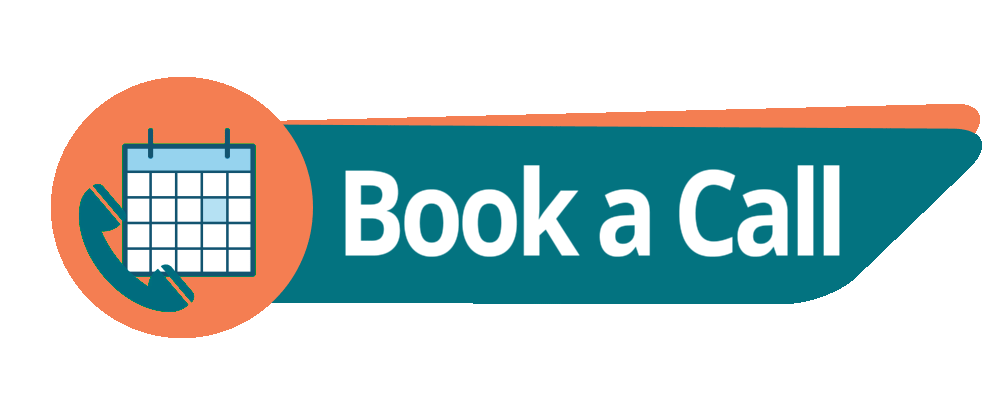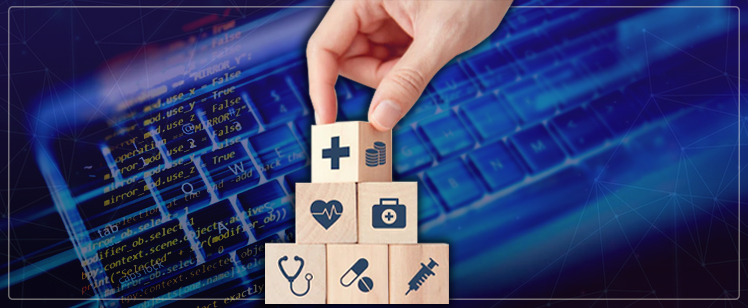
The healthcare sector is under pressing demand to provide access to comprehensive and fast healthcare solutions. The aging population and the mushrooming of unidentified diseases across the globe are the major factors behind the emphasis on novel solutions. With technology as its facilitator, the healthcare sector is on the path of rapid acceleration in improved medical assistance to all patients with utmost convenience.
The role of technology is of extreme significance due to the combined demand for scalability along with innovation in the healthcare industry. In fact, the future upward trajectory of the digital healthcare market depicts how technology is reshaping the healthcare industry. According to Digital Health Market Outlook, the digital healthcare market is expected to reach USD 1 trillion by 2028.
Here’re the top digital transformation trends in the healthcare sector paving the way for more robust and accessible healthcare solutions!
Table of Contents
Telehealth
 Source – Telehealth Market 2020-2024
Source – Telehealth Market 2020-2024
Amongst the innovative healthcare solutions, telehealth is one of the most reformational addition. From facilitating the distribution of medical education to medical assistance via remote technologies across healthcare industries, telehealth is defining convenience in clinical care practices. The projected 32.1% growth in 2021-2028 is a testament to its ability to bring digital transformation in healthcare.
The rise of the telehealth industry is also pushing for the growth of another segment in the healthcare industry, i.e., secure storage of information. To help healthcare businesses provide streamlined medical assistance, leading companies like HCL curate products like the Cloud. Such cloud-based tools are the most effective innovations to ensure the storage of digital outputs from medical devices and facilitate the digitization of healthcare.
Case Study: Brightline
With the technology-enabled platform, Brightline provides behavioral health assistance through innovative technology. Based in California, the company offers telehealth services via virtual sessions and online coaching programs to children and their families. Because of its unique approach towards catering to mental health, the telehealth business is an esteemed part of the world’s 50 most innovative companies.
Electronic Health Records
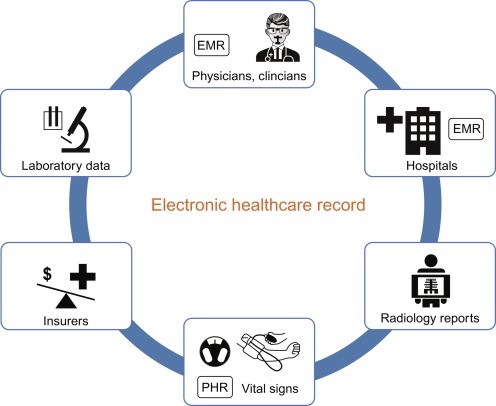 Source – Electronic Health Records
Source – Electronic Health Records
Medical records are the primary information source for any medical practitioner to avail a patient of the correct course of treatment. These records require maintenance of the patient’s history, clinical assessments, diagnosis results, pre and post-operative care details and so on.
Depending on the law of practice state, the practitioners need to maintain these records for an average of 5 to 10 years. Not only was it time-consuming, but also difficult to ensure efficiency. With Electronic Health Records, now medical experts can provide faster healthcare delivery with better clinical outcomes.
Additionally, these digital innovations act as a facilitator between different medical assistance providers for information sharing.
Case Study: Dragon Medical One
Owned by Nuance, Dragon Medical One is clinical documentation assistance that helps physicians with the documentation of medical records. Through speech recognition and clinical intelligence solutions, this tool increases the efficiency of the documentation process.
AI-Driven Digital Healthcare Solutions
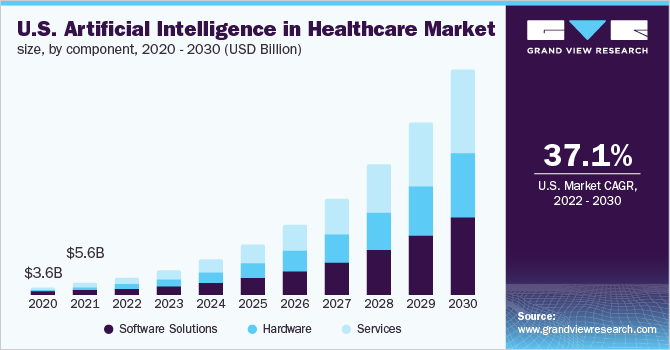 Source – Artificial Intelligence Healthcare Market
Source – Artificial Intelligence Healthcare Market
The adoption of AI in diagnosing and treating fatal diseases can do wonders for detecting illnesses before they turn incurable. AI solutions enable physicians to deliver quality treatment to patients based on data-acquired insights. Additionally, diagnostic tools backed by machine learning are more efficient in detecting serious diseases like breast cancer.
From ensuring the accuracy of the diagnosis to structuring the usual symptoms, AI-powered healthcare tools can carry out processes to benefit all areas of industry. In addition, this AI-enabled tools can improve the efficiency and precision that can lead to better diagnosis.
Case Study: Hologic
The company provides a range of diagnostic tools for advancing women’s health and well-being across the globe. Hologic’s consistent growth in the breast and skeletal health industry has proven its products’ quality and technical soundness to detect, diagnose and cure health conditions promptly.
Wearable Devices
From fitness trackers to blood pressure cuffs, wearable healthcare devices enable clinicians to ensure remote monitoring of patients. Irrespective of the setting and the distance from the patients, medical practitioners can analyze an individual’s overall health depending on the plantable type used.
These innovations in the healthcare industry are not only improving the patient’s experience but also providing a window for expansion to healthcare services. Whether the patient has opted for at-home medical assistance or requires remote monitoring, with these advanced solutions, comfort and safety have become a new standard of healthcare.
Case Study: Palarum
PUP Smart Sock is a wearable technology launched by the company Palarum. Short for ‘Patient is up,’ the cutting-edge innovation employs eTextile and IoT in the healthcare industry. It prevents patients’ falls during their resting period and improves rehabilitation therapy. The band comes with a sock and smart badge for the patient and caregiver. In the event of any movement of the patient, the smart sock alarms the nearby nurse in an attempt to prevent accidents.
Robotic Automation of Processes
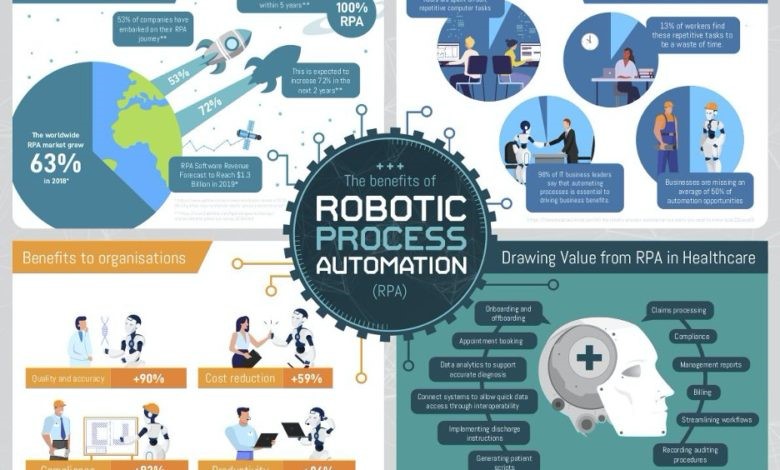 Source – Robotic Process Automation
Source – Robotic Process Automation
To rid health providers of repeated and mundane tasks, robotic process automation is emerging as an efficient constructor in the healthcare industry. It fosters workflow management and the medical productivity of the medical caregivers. It enables doctors to focus more on patient interaction and experiences to analyze their requirements better.
The automation also reduces errors by handling patient appointments and growth tracking effectively.
Case Study: UiPath
With artificial intelligence and machine learning models, the UiPath platform allows businesses to automate their day-to-day tasks. The tool enables users of small and large-scale businesses to accelerate workflows through end-to-end automation solutions. From increasing pending payment processing to reducing time for CGHS and ECHS execution for Max Healthcare, UiPath has assisted the hospital in drastically improving the system efficiency.
Augmented and Virtual Reality
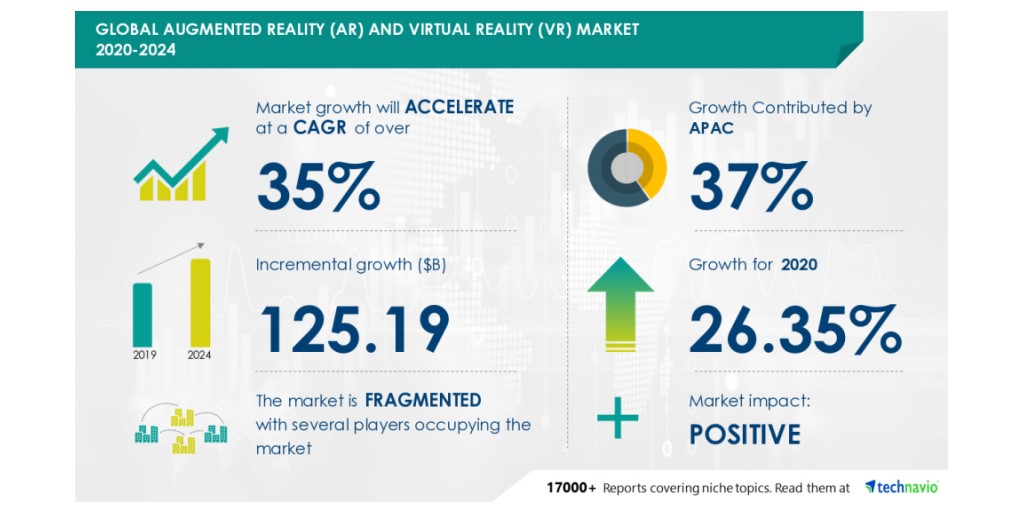 Source – Augmented and Virtual Reality
Source – Augmented and Virtual Reality
AR and VR in the healthcare industry have completely transformed the medical diagnosis and treatments offered. Revolutionizing how practitioners are trained to enhance their ability to detect illnesses, technology is bringing new methods of medical assistance to the world.
According to Research and Markets reports, the AR-VR sector in healthcare carries the potential to grow more than threefold within five years. The application of technology is infinite in the healthcare industry, which demands the visualization of the human anatomy. Along with offering clinical support, this technology is a potent tool for fostering remote education through simulations across borders.
Case Study: Microsoft Hololens
Using a range of advanced sensors, cutting-edge optics and holographic processing, Microsoft has created Hololens. These lenses utilize mixed reality to display information, simulate a virtual environment and create an interplay between the real and virtual world.
The tool is made with multiple optical sensors on each side for environmental sensing, on camera and on speakers. Along with microphones and HD cameras, these devices create a spatial orientation of a unit in an area. These orientations are regularly recorded to create a duplication of the 3D image for the wearer.
Predictive Healthcare Products
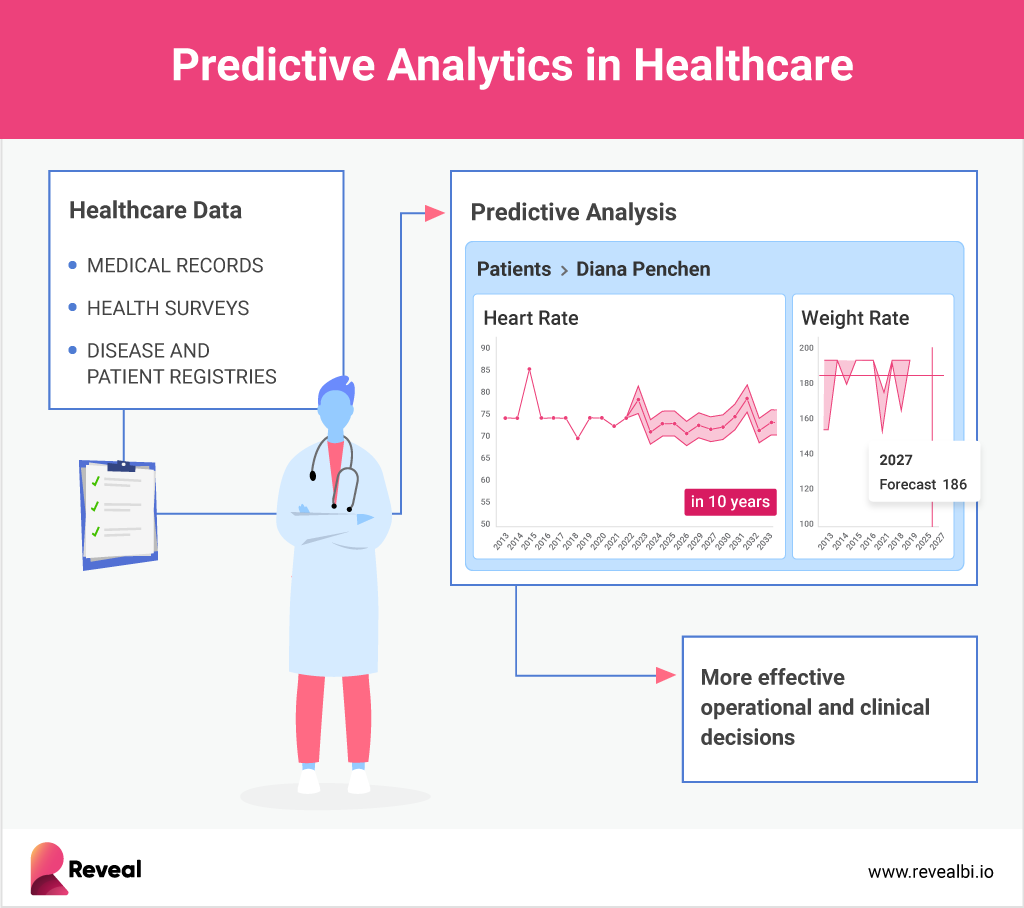 Source – Predictive Analytics in Healthcare
Source – Predictive Analytics in Healthcare
The collection of big data about the current health status of patients is helpful in preparing institutions for extensive medical support. Depending upon the analysis received from the wearable devices, healthcare records and other digital solutions, hospitals can gauge the likely trend of illnesses. On top of this, such aggregated information can also help predict major diseases plaguing the world in the future.
Driven by the combination of artificial intelligence and IoT, predictive analytics function on analyzing the algorithms based on historical data. Through predictive analytics, doctors can detect primary signs of deterioration, fatality risk in patients and control the downtime of medical equipment simultaneously.
Case Study: Ysbyty Gwynedd General Hospital
By relying on predictive analytics, the Ysbyty Gwynedd General Hospital observed a decline in the occurrence of severe diseases and cardiac arrest by 35%. With the help of ward monitoring solutions, the nurses were more able to focus on offering help to the ailing patients with ease. Additionally, the centralized accumulation of information ensured quick identification of health deterioration and faster assistance provisions.
In a nutshell
From enhancing patient care to fostering healthcare services delivery, the IT industry is reshaping how the medical sector operates today. Whether it’s about easy access to mental health sessions or remote monitoring of a heart disease patient, the overall healthcare services’ efficiency has magnified manifold through the utilization of technology.
The integration of digital transformations across the verticals in the healthcare industry is one of the reasons behind higher consumer convenience today. Not only it enables quick access to personalized services, but it also ensures better communication with medical practitioners. Additionally, the employment of advanced technologies isn’t merely beneficial for the patients but also for businesses with reduced operational costs.
With more emphasis on patient experience and comprehensive treatment, there will be more incorporation of digitization in the healthcare industry in the future.


